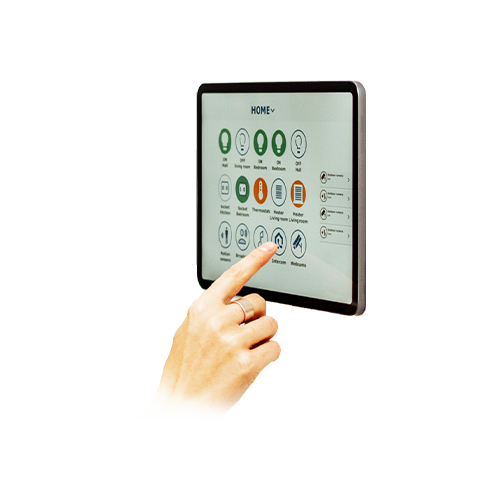
In today’s fast-evolving tech world, touchscreens are everywhere—from smartphones and tablets to laptops and automotive dashboards. Among the various touchscreen technologies available, In-Cell Touch Displays are gaining traction for their slim form factor, improved display clarity, and responsive touch experience.
What is an In-Cell Touch Display?
An In-Cell Touch Display integrates the touch sensor directly into the LCD (or OLED) cell itself, rather than adding it as a separate layer on top of the screen. Traditional displays typically use “on-cell” or “add-on” touch panels, which stack additional layers over the screen. In contrast, in-cell technology embeds touch functionality into the display panel, eliminating extra layers and enabling thinner, lighter, and more visually immersive devices.
Key Advantages of In-Cell Touch
- Thinner and Lighter Design
Since the touch sensor is built into the screen itself, there’s no need for an extra layer, resulting in a sleeker profile—ideal for modern smartphones, tablets, and ultra-portable devices. - Enhanced Display Clarity
Fewer layers mean less light refraction, which translates into better brightness, color reproduction, and overall screen clarity. - Improved Touch Responsiveness
With fewer physical barriers between the display and user input, touch response time improves significantly, delivering a smoother and more precise user experience. - Cost Efficiency in the Long Term
While initial production may be more complex, the integration can reduce component counts and assembly steps, ultimately lowering costs for manufacturers.
Applications of In-Cell Touch
In-cell displays are widely used in:
- Smartphones and Tablets: Enabling edge-to-edge screens with better visuals and less bulk.
- Laptops and Ultrabook: Offering touch capability without sacrificing thinness or battery life.
- Automotive Displays: Creating elegant infotainment and control systems with responsive touch features.
- Wearables: Supporting compact, lightweight designs without compromising functionality.
The Future of In-Cell Technology
As consumer demand grows for slimmer, lighter, and more responsive devices, in-cell touch technology is set to become the standard in touchscreen design. With ongoing innovations in display materials and flexible panel construction, we can expect to see in-cell touch incorporated into foldable screens, rollable displays, and next-generation smart devices.
Conclusion
In-Cell Touch Displays represent a significant leap forward in touchscreen design. Their ability to merge visual quality with functional performance makes them a go-to solution for manufacturers striving for elegant, efficient, and high-performing electronic devices. As technology matures, it’s likely to redefine how we interact with digital displays across every industry.
Microtips Technology’s https://microtipsusa.com/ In‑Cell Touch Display seamlessly embeds the touch sensor directly within the LCD panel—eliminating the need for extra glass or film layers. This integration results in a thinner, lighter design with enhanced optical clarity and faster touch response. Our https://microtipsusa.com/ displays Engineered for industrial, medical, and rugged environments. It supports glove and stylus input, offers reliable water resistance, and delivers precise performance across both compact and open‑frame displays.
Microtips Technology https://microtipsusa.com/ : Innovative Solutions. Your Vision. Our Goal.
